Jardin botaniques des fleurs sauvages du mont Gayasan (가야산 야생화식물원)
12.4Km 2021-02-19
49, Gayasansingmurwon-gil, Suryun-myeon, Seongju-gun, Gyeongsangbuk-do
+82-54-931-1264
Ouvert en juin 2006, le jardin botanique des fleurs sauvages de Gayasan est le premier jardin de fleurs sauvages en Corée. Cet espace culturel sur le thème des fleurs sauvages abrite près de 400 espèces différentes.
Jardin extérieur
Le jardin extérieur s’ouvre sur le magnifique paysage du mont Gayasan, et il est organisé autour de cinq thèmes.
1) Massif d’arbustes
Près de 30 espèces différentes d’arbustes et de fleurs sauvages y ont été plantées. Vous pouvez admirer ces magnifiques plantes du début du printemps jusqu’en hiver.
2) Jardin des chrysanthèmes
Environ 15 espèces de chrysanthèmes et de fleurs sauvages s’y épanouissent jusqu’à la fin de l’automne
3) Jardin des rhizocarpons
On y trouve une cinquantaine d’espèces différentes de fleurs sauvages, parmi lesquelles des coeurs de Marie (Dicentra spectabilis), des iris (Iris nertschinskia), des hémérocalles (Hemerocallis thunbergii) et des hostas (Hosta longipes) qui fleurissent du printemps jusqu’à l’automne.
4) Jardin des plantes natives de Gayasan
Environ 120 espèces de fleurs sauvages locales y ont été plantées.
5) Jardin éducatif des fleurs sauvages
Une cinquantaine d’espèces différentes de petites fleurs sauvages ont été plantées sur le toit du musée. Les visiteurs peuvent y contempler et comparer les différentes variétés de fleurs sauvages.
Serre
La serre abrite des arbres et des fleurs sauvages nécessitant de la chaleur. Vous pourrez profiter du doux parfum des fleurs quelle que soit la saison.
1) Jardin des plantes comestibles
On y trouve une vingtaine d’espèces de plantes comestibles, parmi lesquelles des mandariniers et des néfliers du Japon
2) Jardin des plantes médicinales
Environ 25 espèces de plantes produisant des herbes médicinales y poussent
3) Jardin des fleurs odoriférantes
Y sont plantées une trentaine d’espèces différentes de fleurs odoriférantes telles que le laurier (daphne), le laurier rose (Nerium indicum) et le Gaya, aussi appelé Torreya du Japon (Torreya nucifera).
4) Jardin des plantes ornementales
On y trouve une trentaine d’espèces de magnifiques plantes ornementales, parmi lesquelles l’ardisia corallienne (Ardisia crenata), la pachysandra (Pachysandra terminalis), l’ardisia japonaise (Ardisia japonica), le crinum asiaticum et l’orchidée bletilla striata.
5) Jardin des plantes aquatiques
On y trouve une vingtaine d’espèces différentes de plantes aquatiques divisées en plantes d’eau peu profondes, plantes flottantes et plantes à feuilles flottantes. Le jardin abrite des nénuphars, des plantes caméléon (Houttuynia cordata) et des nymphoides (Nymphoides indica).
6) Jardin des fougères
Les fougères sont des plantes qui se propagent par les spores et n’ont pas de fleurs. On y trouve une quarantaine d’espèces différentes de fougères, parmi lesquelles des Pteridium aquilinum var. latiusculum et des lycopes (Lycopodium clavatum var. nipponicum) ainsi que des plantes locales de climat tempéré telles que des Leveille (Dendropanax morbifera) et des Machilus chunbergii.
Gaya Hotel (가야호텔)
12.4Km 2024-12-19
52, Gayasansingmurwon-gil, Seongju-gun, Gyeongsangbuk-do
+82-54-931-3500
Gaya Hotel is located 560 meters above sea level on Gayasan Mountain in a pristine natural environment. The hotel also offers a sauna that uses natural mineral water. Near the hotel is the only Korean wild flower botanical garden.
Musée de Daegaya (대가야박물관)
14.0Km 2021-01-23
1203, Daegaya-ro, Goryeong-eup, Goryeong-gun, Gyeongsangbuk-do
+82-54-950-7103
Le musée de Daegaya est consacré à l’histoire, à la culture et aux coutumes de l’ancien royaume du grand Gaya (42 – 562). Il abrite le pavillon de l’histoire de Daegaya, et le pavillon de la tombe royale de Daegaya.
Le pavillon de l’histoire de Daegaya présente l’histoire et la culture du royaume au travers de reliques datant de l’âge de pierre jusqu’à l’âge moderne. Le hall des expositions temporaires accueille une à deux fois par an des expositions spéciales axées sur des aspects particuliers du royaume. Le hall d’activité des enfants propose toutes sortes de programmes permettant aux enfants de découvrir le royaume du Grand Gaya. Le centre d’exposition en plein air abrite plusieurs objets de la vie de tous les jours, comme par exemple une pirogue, un grenier de stockage, un fourneau de fer ou encore des reliques bouddhistes.
Le pavillon de la tombe royale de Daegaya est la version restaurée du tumulus n° 44 de Jisandong, première soonjang (enterrement des vivants avec les morts) découverte en Corée. Le pavillon met l’accent sur les reliques découvertes dans les anciennes tombes de Jisandong. Le pavillon en forme de dome fait 37 m de diamètre et 16 m de haut.
Les objets exposés incluent une réplique de la couronne d’or et des decorations de Goryeong (trésor national n° 138), une copie de l’ancienne tombe et sa fresque murale de Goa-ri à Goryeong (site historique n° 165), la pagode à trois étages du temple Banryongsa et la cloche de bronze. On peut visiter non loin l’académie confucéenne de Goryeong, les pétroglyphes de Yangjeondong (trésor n° 605), la forteresse Jusanseong (site historique n° 61), ou encore le monnument Ureuk, les pilliers de bannière de Jisandong (trésor n° 54).
Site touristique historique de Daegaya (대가야 역사테마 관광지)
14.2Km 2021-12-28
1216, Daegaya-ro, Goryeong-gun, Gyeongsangbuk-do
+82-54-950-7005
Erigé à l’emplacement de l’ancienne capitale de Daegaya, ce site touristique permet de découvrir l’histoire du royaume de Daegaya, qui a vu l’avènement des premières poteries et outils en fer, ainsi que de la culture du gayageum (cithare coréenne). Les diverses installations (cinéma en 4D, reliques, expositions, sentier forestier...) vous offrent un véritable voyage dans le temps. Daegaya était une fédération dont la création remonte avant notre ère, jusqu’à son absorbtion par le royaume de Silla en 562. Elle se distinguait par son commerce extérieur indépendant, l’excellence de sa métallurgie, et ses reliques culturelles incluant le gayageum. L’intérêt grandissant envers Gaya fait que l’on ne parle plus de l’époque des Trois Royaumes (Goguryeo, Baekje et Silla), mais des Quatre Royaumes en incluant Gaya. Gaya fait également l’objet de nombreuses recherches académiques.
Le siège du gouvernement de Gaya se trouvait autrefois à Goryeong. Ainsi, on peut y trouver de nombreuses reliques de cette période. Le site touristique historique de Daegaya a pour but de mettre en place des évènements culturels et académiques, de restructurer la zone culturelle de Gaya à forte valeur documentaire, et de restaurer et propager la culture de Gaya.
Parc National du Mt. Gayasan (가야산국립공원 - 홍류동,청량동지구)
14.3Km 2021-04-27
1200, Gayasan-ro, Hapcheon-gun, Gyeongsangnam-do
+82-55-930-8000
Caractérisé par le plus haut pic du nom de Sangwangbong, le Mt. Gayasan est composé de plusieurs pics de plus de 1.000m au-dessus du niveau de la mer, dont les rochers abrupts, qui sont connectés les uns aux autres, ressemblent à un paravent coréen en plusieurs panneaux peints. C’était un des huit plus beaux paysages pour les gens du temps de la Dynastie Joseon. A partir de la Montagne Taebaek, le Mt. Gayasan s’étend de l’est vers l’ouest. En 1972, il a été désigné comme le Parc National Nº 9 dû à ses magnifiques traits particuliers. Le Mt. Gayasan a beaucoup de fameux endroits touristiques. Et spécialement, le Temple Haeinsa, qui se trouve dans la partie sud-ouest du Mt. Gayasan, est un des trois temples les plus fameux en Corée. Il abrite le Tripitaka Koreana (Trésor National Nº 32), collection la plus complète de textes du canon bouddhiste, gravées sur 80.000 tablettes de bois, entre 1237 et 1248. C’est une vue fantastique avec le vieux temple et le beau paysage. De plus, il y a d’autres biens culturels tels que le Pavillon Janggyeonggak (Trésor National Nº 52), le Bouddha en pierre (Trésor Nº 518) et le Monument Banya du Temple Gyeongwangsa (Trésor Nº 128) qui a été désigné comme Patrimoine Culturel Mondial de l’UNESCO. En outre, le Mt. Gayasan est reconnu pour son paysage gracieux de montagnes. L’eau qui s’écoule de la vallée Gayasan passe devant le Temple Haeinsa et continue son cours vers le sud-est où il forme la rivière Gayacheon. Parmi les nombreuses vallées, la vallée Hongnyudong, dont ses eaux paraissent rougeâtres par le reflet des feuillages en automne, fait la perfection de cette vue grandiose avec des sapins qui font plusieurs milliers d’années. Namsanjeil - bong, Le Pic Namsanjeilbong qui se trouve dans la partie sud de Hongnyudong, est appelé Mt. Cheonbulsan (Cheon= un millier; bul= statues de Bouddha) parmi les Bouddhistes parce qu’il ressemble à des milliers de statues bouddhistes recouvrant toute la crête de la montagne. Le Mt. Cheonbulsan est une promenade favorite de plusieurs, pour un jour en montagne. En chacune des saisons, le Mt. Gayasan montre des paysages spendides avec ses cerisiers japonais en fleurs, ses azalées et les azalées royales alignées sur la route vers le Temple Haeinsa, au printemps; l’eau pure et claire avec les arbres verts, en été; la teinte glorieuse de son feuillage automnal le long des crêtes rocheuses, et un paysage de neige, en hiver.
Musée Ureuk (우륵박물관)
15.2Km 2021-02-16
98 Gayageum-gil Goryeong-eup Goryeong-gun Gyeongsangbuk-do
+82-54-950-7136
Musée Ureuk est un musée dédié
au Gayageum (un instrument traditionnel coréen de douze cordes) et Ureuk
est l'inventeur du Gayageum et un grand musicien de l'époque. Le Musée
Ureuk est le seul musée de ce genre qui rassemble, conserve et présente
des pièces qui permettent aux visiteurs d'apprécier plus profondément
la beauté et l'histoire de l'instrument.
Parc à thème du tournage de Hapcheon (합천 영상테마파크)
16.5Km 2025-08-21
757, Hapcheonhosu-ro, Yongju-myeon, Hapcheon-gun, Gyeongsangnam-do
Chaque ruelle dégage une atmosphère singulière et regorge de curiosités : ce lieu a servi de décor à plus de 190 productions, qu’il s’agisse de dramas, de films ou de clips musicaux, situés entre les années 1920 et 1980. On peut parcourir le parc en tram (voiture électrique) ou en calèche, et chaque recoin offre de beaux points de vue pour les photos.
À l’arrière du parc à thème du cinéma s’étend désormais le plus grand parc de bonsaïs et de jardins du pays, couvrant 150 000 ㎡. Autour du bâtiment principal, qui abrite le décor du palais présidentiel de la Cheongwadae, se trouvent également une serre de bonsaïs, un espace de découverte de la forêt écologique et un atelier de culture du bois, permettant aux adultes comme aux enfants de profiter d’activités en pleine nature.
※ L’accès en voiture au décor de la Cheongwadae est strictement interdit.
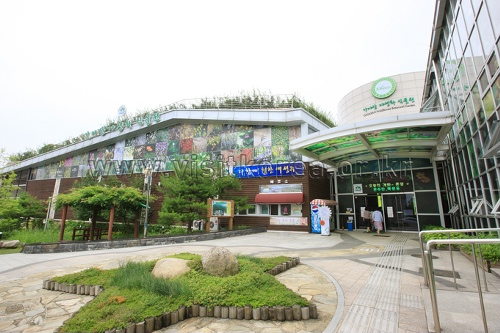
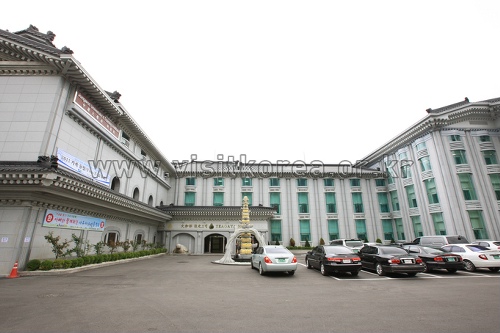
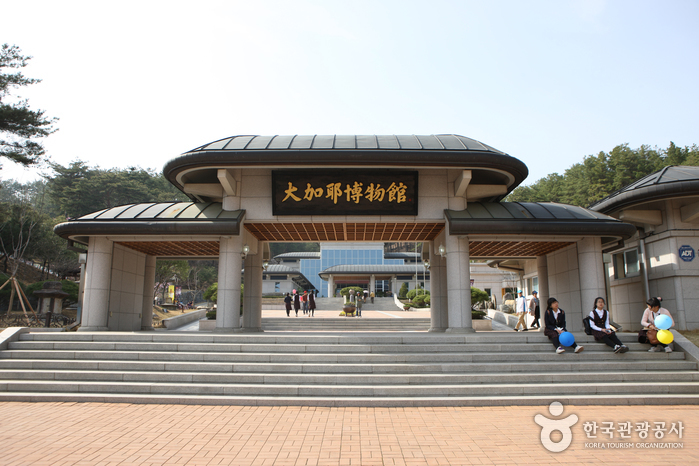
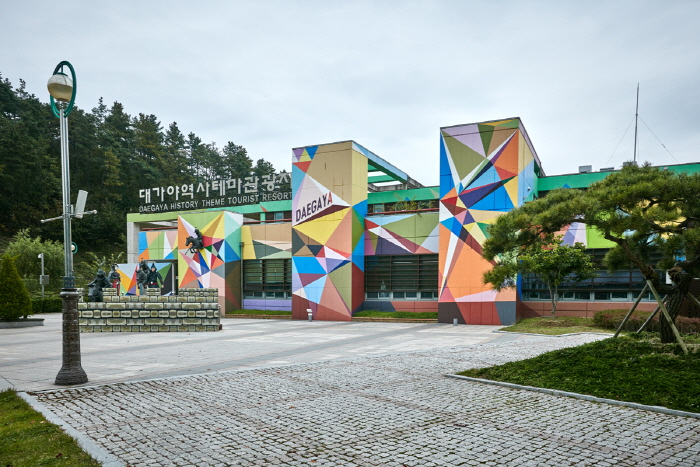

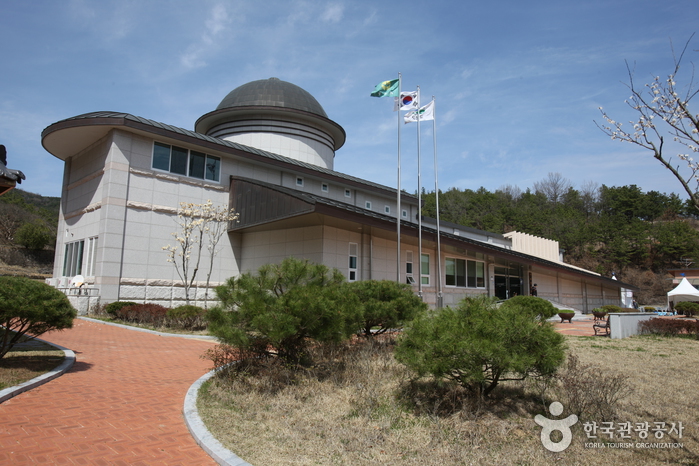
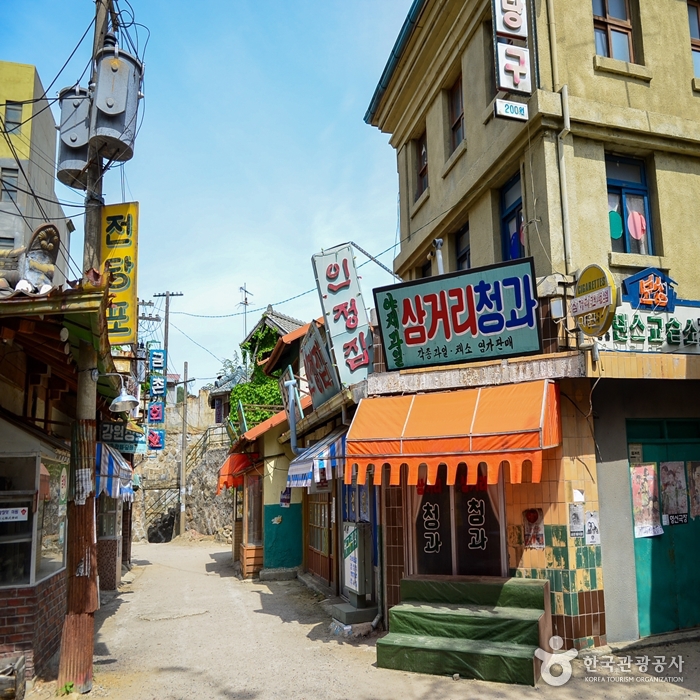
 Français
Français
 한국어
한국어 English
English 日本語
日本語 中文(简体)
中文(简体) Deutsch
Deutsch Español
Español Русский
Русский